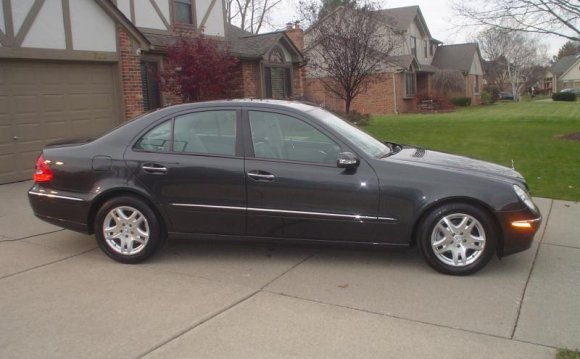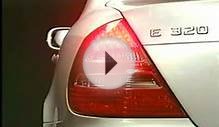
On February 17, 1894, Rudolf Diesel persuaded his "rational heat engine" to run for more than a few fitful sputters, and the age of compression ignition-no spark required!-was born. You may wonder why. Couldn't Rudi afford spark plugs? Answer: Rudi had an idea for a more efficient internal-combustion engine.
At 10 feet tall, Diesel's first engine was just a little bulky for automotive applications. And by the time Mercedes bolted a diesel into one of its passenger cars, in 1936, Rudi was long gone to that great combustion chamber in the sky. But his creation lingers.
Fast forward to 2004. Mercedes-Benz introduces the 2005 E320 CDI, and the age of the Benz diesel is reestablished in North America, another example of the rebirth of compression ignition in the U.S. VW offers diesel options for the New Beetle, Jetta, Passat, and Touareg. Jeep is about to do the same with the Liberty. And now here's Mercedes back in the game after a five-year absence.
Given the increasingly hostile regulatory climate facing diesels, this may seem to be a dead-end business. Even with the 2006 onset of low-sulfur fuel and the huge improvements that go with common-rail fuel injection, there are Tier 2 emissions hurdles on the near horizon-oxides of nitrogen and particulates-that may be too tall for current diesels to clear. And in fact, the CDI's return to the U.S. is limited to 45 states. It's regulated out of California, New York, Maine, Massachusetts, and Vermont.
On the other hand, passenger-car diesels are more civilized than ever before, a conviction that emerged during our recent review of several sparkless rides ("Diesel's Last Stand?" March 2004) and was reinforced during our communion with a U.S.-spec E320 CDI, one of the first of some 4000 that Mercedes plans to sell this year, with prices starting at about $50, 000. That's $1000 and change north of the base price for the gas-powered E320.
So what do you get for the CDI's price premium? More. And less. More mass, more thrust, and more fuel economy. Less of that irritating old diesel noise and stink.
The heart of the matter is a 3.2-liter DOHC 24-valve intercooled inline turbo-diesel six-cylinder engine. Like all diesels, the compression ratio is high-18:1-although not as high as naturally aspirated diesels. The turbocharger has a variable nozzle turbine, integrated with the engine-management system. Fuel-rail pressure is bottom-of-the-ocean prodigious-almost 23, 000 psi, about 350 times the pressure in a gas E320-to promote optimal fuel atomization through the seven-hole nozzles of each injector valve, one of the keys to the improved combustion efficiency of common-rail diesels.
Another element distinguishing this diesel is a pilot-injection function that precedes the main combustion event by a few milliseconds, damping the noise, mitigating temperature changes, and reducing NOx emissions.
But that's not what diesel buyers care about. They care about diesel virtues: fuel economy and torque. The CDI's horsepower rating is modest-201 at 4200 rpm, 20 less than the gasoline engine-but its torque output puts the V-6 on the trailer: 369 pound-feet versus 232. And the peak occurs on a lovely plateau that begins barely off idle: 1800 to 2600 rpm.
RELATED VIDEO












